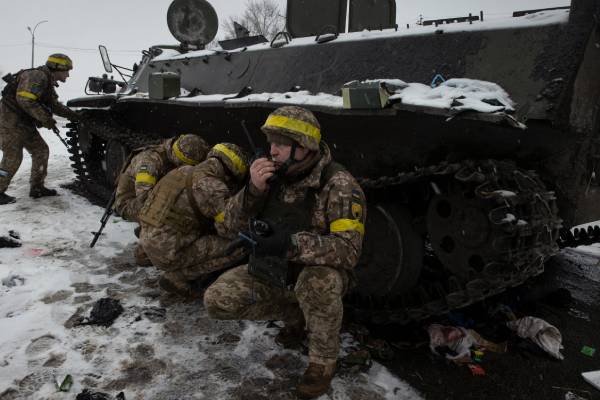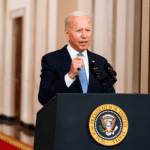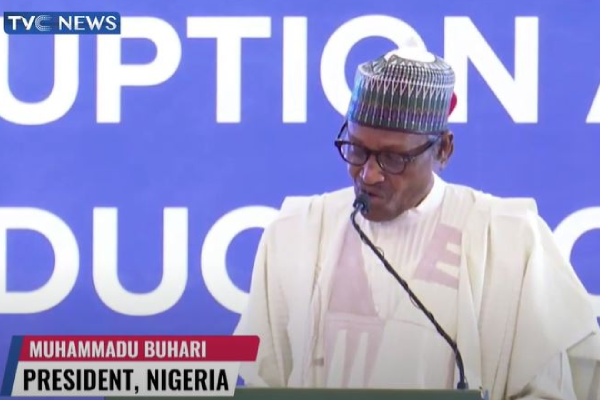The United States is sending $625m to Ukraine in additional weaponry, including High Mobility Artillery Rocket System (HIMARS) launchers, in a move that Moscow says runs the risk escalating the war.
US President Joe Biden spoke to his Ukrainian counterpart Volodymyr Zelenskyy on Tuesday as Ukraine continues an offensive in the country’s south and east to liberate areas occupied by Russia after its February 24 invasion.
Zelenskyy has said his forces were making “rapid and powerful” gains and had retaken “dozens” of villages on the two battlefronts.
Biden, who was joined in the call by Vice President Kamala Harris, stressed Washington’s continued support for Kyiv.
Biden “pledged to continue supporting Ukraine as it defends itself from Russian aggression for as long as it takes,” a statement from the White House said.
The military package is the first since Russia announced it was formally annexing four occupied areas of Ukraine following a series of hastily organised referendums that have been condemned as coercive and in breach of international law.
The White House said the arms – to be drawn immediately from existing US military stockpiles – would include four more HIMARS precision rocket launchers, 32 Howitzers with 75,000 rounds of ammunition, 200 Mine-Resistant Ambush Protected (MRAP) vehicles and Claymore anti-personnel mines.
“Recent developments from Russia’s sham referenda and attempted annexation to new revelations of brutality against civilians in Ukrainian territory formerly controlled by Russia only strengthens our resolve,” US Secretary of State Antony Blinken said in a statement.
The advanced weaponry has helped Ukraine in its effort to push back Russian troops amid a rapid offensive that began in early September and swiftly secured control of the Kharkiv region from Russia.
Ukraine is now trying to make further inroads in the south and east before the colder weather arrives and Russia can deploy the 300,000 reservists called up in an unpopular partial mobilisation two weeks ago.
“This package will provide Ukrainian armed forces with additional capabilities and munitions that it needs to maintain momentum in the east and in the south,” said Laura Cooper, the Pentagon’s top official for Russia and Ukraine.
“We’re looking very closely at their consumption rates for ammunition, to make sure that they have what they need for the counteroffensive,” she said.
The US decision to send more military assistance prompted criticism from Anatoly Antonov, Russia’s ambassador to the United States, who warned of potential consequences.
“We perceive this as an immediate threat to the strategic interests of our country,” Antonov said on the Telegram messaging app.
“The supply of military products by the US and its allies not only entails protracted bloodshed and new casualties, but also increases the danger of a direct military clash between Russia and Western countries.”
Russian President Vladimir Putin has made a series of thinly veiled threats over the use of nuclear weapons in recent weeks in the defence of Russian territory.
The United States is sending $625m to Ukraine in additional weaponry, including High Mobility Artillery Rocket System (HIMARS) launchers, in a move that Moscow says runs the risk escalating the war.
US President Joe Biden spoke to his Ukrainian counterpart Volodymyr Zelenskyy on Tuesday as Ukraine continues an offensive in the country’s south and east to liberate areas occupied by Russia after its February 24 invasion.
Zelenskyy has said his forces were making “rapid and powerful” gains and had retaken “dozens” of villages on the two battlefronts.
Biden, who was joined in the call by Vice President Kamala Harris, stressed Washington’s continued support for Kyiv.
Biden “pledged to continue supporting Ukraine as it defends itself from Russian aggression for as long as it takes,” a statement from the White House said.
The military package is the first since Russia announced it was formally annexing four occupied areas of Ukraine following a series of hastily organised referendums that have been condemned as coercive and in breach of international law.
The White House said the arms – to be drawn immediately from existing US military stockpiles – would include four more HIMARS precision rocket launchers, 32 Howitzers with 75,000 rounds of ammunition, 200 Mine-Resistant Ambush Protected (MRAP) vehicles and Claymore anti-personnel mines.
“Recent developments from Russia’s sham referenda and attempted annexation to new revelations of brutality against civilians in Ukrainian territory formerly controlled by Russia only strengthens our resolve,” US Secretary of State Antony Blinken said in a statement.
The advanced weaponry has helped Ukraine in its effort to push back Russian troops amid a rapid offensive that began in early September and swiftly secured control of the Kharkiv region from Russia.
Ukraine is now trying to make further inroads in the south and east before the colder weather arrives and Russia can deploy the 300,000 reservists called up in an unpopular partial mobilisation two weeks ago.
“This package will provide Ukrainian armed forces with additional capabilities and munitions that it needs to maintain momentum in the east and in the south,” said Laura Cooper, the Pentagon’s top official for Russia and Ukraine.
“We’re looking very closely at their consumption rates for ammunition, to make sure that they have what they need for the counteroffensive,” she said.
The US decision to send more military assistance prompted criticism from Anatoly Antonov, Russia’s ambassador to the United States, who warned of potential consequences.
“We perceive this as an immediate threat to the strategic interests of our country,” Antonov said on the Telegram messaging app.
“The supply of military products by the US and its allies not only entails protracted bloodshed and new casualties, but also increases the danger of a direct military clash between Russia and Western countries.”
Russian President Vladimir Putin has made a series of thinly veiled threats over the use of nuclear weapons in recent weeks in the defence of Russian territory.
The United States is sending $625m to Ukraine in additional weaponry, including High Mobility Artillery Rocket System (HIMARS) launchers, in a move that Moscow says runs the risk escalating the war.
US President Joe Biden spoke to his Ukrainian counterpart Volodymyr Zelenskyy on Tuesday as Ukraine continues an offensive in the country’s south and east to liberate areas occupied by Russia after its February 24 invasion.
Zelenskyy has said his forces were making “rapid and powerful” gains and had retaken “dozens” of villages on the two battlefronts.
Biden, who was joined in the call by Vice President Kamala Harris, stressed Washington’s continued support for Kyiv.
Biden “pledged to continue supporting Ukraine as it defends itself from Russian aggression for as long as it takes,” a statement from the White House said.
The military package is the first since Russia announced it was formally annexing four occupied areas of Ukraine following a series of hastily organised referendums that have been condemned as coercive and in breach of international law.
The White House said the arms – to be drawn immediately from existing US military stockpiles – would include four more HIMARS precision rocket launchers, 32 Howitzers with 75,000 rounds of ammunition, 200 Mine-Resistant Ambush Protected (MRAP) vehicles and Claymore anti-personnel mines.
“Recent developments from Russia’s sham referenda and attempted annexation to new revelations of brutality against civilians in Ukrainian territory formerly controlled by Russia only strengthens our resolve,” US Secretary of State Antony Blinken said in a statement.
The advanced weaponry has helped Ukraine in its effort to push back Russian troops amid a rapid offensive that began in early September and swiftly secured control of the Kharkiv region from Russia.
Ukraine is now trying to make further inroads in the south and east before the colder weather arrives and Russia can deploy the 300,000 reservists called up in an unpopular partial mobilisation two weeks ago.
“This package will provide Ukrainian armed forces with additional capabilities and munitions that it needs to maintain momentum in the east and in the south,” said Laura Cooper, the Pentagon’s top official for Russia and Ukraine.
“We’re looking very closely at their consumption rates for ammunition, to make sure that they have what they need for the counteroffensive,” she said.
The US decision to send more military assistance prompted criticism from Anatoly Antonov, Russia’s ambassador to the United States, who warned of potential consequences.
“We perceive this as an immediate threat to the strategic interests of our country,” Antonov said on the Telegram messaging app.
“The supply of military products by the US and its allies not only entails protracted bloodshed and new casualties, but also increases the danger of a direct military clash between Russia and Western countries.”
Russian President Vladimir Putin has made a series of thinly veiled threats over the use of nuclear weapons in recent weeks in the defence of Russian territory.
The United States is sending $625m to Ukraine in additional weaponry, including High Mobility Artillery Rocket System (HIMARS) launchers, in a move that Moscow says runs the risk escalating the war.
US President Joe Biden spoke to his Ukrainian counterpart Volodymyr Zelenskyy on Tuesday as Ukraine continues an offensive in the country’s south and east to liberate areas occupied by Russia after its February 24 invasion.
Zelenskyy has said his forces were making “rapid and powerful” gains and had retaken “dozens” of villages on the two battlefronts.
Biden, who was joined in the call by Vice President Kamala Harris, stressed Washington’s continued support for Kyiv.
Biden “pledged to continue supporting Ukraine as it defends itself from Russian aggression for as long as it takes,” a statement from the White House said.
The military package is the first since Russia announced it was formally annexing four occupied areas of Ukraine following a series of hastily organised referendums that have been condemned as coercive and in breach of international law.
The White House said the arms – to be drawn immediately from existing US military stockpiles – would include four more HIMARS precision rocket launchers, 32 Howitzers with 75,000 rounds of ammunition, 200 Mine-Resistant Ambush Protected (MRAP) vehicles and Claymore anti-personnel mines.
“Recent developments from Russia’s sham referenda and attempted annexation to new revelations of brutality against civilians in Ukrainian territory formerly controlled by Russia only strengthens our resolve,” US Secretary of State Antony Blinken said in a statement.
The advanced weaponry has helped Ukraine in its effort to push back Russian troops amid a rapid offensive that began in early September and swiftly secured control of the Kharkiv region from Russia.
Ukraine is now trying to make further inroads in the south and east before the colder weather arrives and Russia can deploy the 300,000 reservists called up in an unpopular partial mobilisation two weeks ago.
“This package will provide Ukrainian armed forces with additional capabilities and munitions that it needs to maintain momentum in the east and in the south,” said Laura Cooper, the Pentagon’s top official for Russia and Ukraine.
“We’re looking very closely at their consumption rates for ammunition, to make sure that they have what they need for the counteroffensive,” she said.
The US decision to send more military assistance prompted criticism from Anatoly Antonov, Russia’s ambassador to the United States, who warned of potential consequences.
“We perceive this as an immediate threat to the strategic interests of our country,” Antonov said on the Telegram messaging app.
“The supply of military products by the US and its allies not only entails protracted bloodshed and new casualties, but also increases the danger of a direct military clash between Russia and Western countries.”
Russian President Vladimir Putin has made a series of thinly veiled threats over the use of nuclear weapons in recent weeks in the defence of Russian territory.
The United States is sending $625m to Ukraine in additional weaponry, including High Mobility Artillery Rocket System (HIMARS) launchers, in a move that Moscow says runs the risk escalating the war.
US President Joe Biden spoke to his Ukrainian counterpart Volodymyr Zelenskyy on Tuesday as Ukraine continues an offensive in the country’s south and east to liberate areas occupied by Russia after its February 24 invasion.
Zelenskyy has said his forces were making “rapid and powerful” gains and had retaken “dozens” of villages on the two battlefronts.
Biden, who was joined in the call by Vice President Kamala Harris, stressed Washington’s continued support for Kyiv.
Biden “pledged to continue supporting Ukraine as it defends itself from Russian aggression for as long as it takes,” a statement from the White House said.
The military package is the first since Russia announced it was formally annexing four occupied areas of Ukraine following a series of hastily organised referendums that have been condemned as coercive and in breach of international law.
The White House said the arms – to be drawn immediately from existing US military stockpiles – would include four more HIMARS precision rocket launchers, 32 Howitzers with 75,000 rounds of ammunition, 200 Mine-Resistant Ambush Protected (MRAP) vehicles and Claymore anti-personnel mines.
“Recent developments from Russia’s sham referenda and attempted annexation to new revelations of brutality against civilians in Ukrainian territory formerly controlled by Russia only strengthens our resolve,” US Secretary of State Antony Blinken said in a statement.
The advanced weaponry has helped Ukraine in its effort to push back Russian troops amid a rapid offensive that began in early September and swiftly secured control of the Kharkiv region from Russia.
Ukraine is now trying to make further inroads in the south and east before the colder weather arrives and Russia can deploy the 300,000 reservists called up in an unpopular partial mobilisation two weeks ago.
“This package will provide Ukrainian armed forces with additional capabilities and munitions that it needs to maintain momentum in the east and in the south,” said Laura Cooper, the Pentagon’s top official for Russia and Ukraine.
“We’re looking very closely at their consumption rates for ammunition, to make sure that they have what they need for the counteroffensive,” she said.
The US decision to send more military assistance prompted criticism from Anatoly Antonov, Russia’s ambassador to the United States, who warned of potential consequences.
“We perceive this as an immediate threat to the strategic interests of our country,” Antonov said on the Telegram messaging app.
“The supply of military products by the US and its allies not only entails protracted bloodshed and new casualties, but also increases the danger of a direct military clash between Russia and Western countries.”
Russian President Vladimir Putin has made a series of thinly veiled threats over the use of nuclear weapons in recent weeks in the defence of Russian territory.
The United States is sending $625m to Ukraine in additional weaponry, including High Mobility Artillery Rocket System (HIMARS) launchers, in a move that Moscow says runs the risk escalating the war.
US President Joe Biden spoke to his Ukrainian counterpart Volodymyr Zelenskyy on Tuesday as Ukraine continues an offensive in the country’s south and east to liberate areas occupied by Russia after its February 24 invasion.
Zelenskyy has said his forces were making “rapid and powerful” gains and had retaken “dozens” of villages on the two battlefronts.
Biden, who was joined in the call by Vice President Kamala Harris, stressed Washington’s continued support for Kyiv.
Biden “pledged to continue supporting Ukraine as it defends itself from Russian aggression for as long as it takes,” a statement from the White House said.
The military package is the first since Russia announced it was formally annexing four occupied areas of Ukraine following a series of hastily organised referendums that have been condemned as coercive and in breach of international law.
The White House said the arms – to be drawn immediately from existing US military stockpiles – would include four more HIMARS precision rocket launchers, 32 Howitzers with 75,000 rounds of ammunition, 200 Mine-Resistant Ambush Protected (MRAP) vehicles and Claymore anti-personnel mines.
“Recent developments from Russia’s sham referenda and attempted annexation to new revelations of brutality against civilians in Ukrainian territory formerly controlled by Russia only strengthens our resolve,” US Secretary of State Antony Blinken said in a statement.
The advanced weaponry has helped Ukraine in its effort to push back Russian troops amid a rapid offensive that began in early September and swiftly secured control of the Kharkiv region from Russia.
Ukraine is now trying to make further inroads in the south and east before the colder weather arrives and Russia can deploy the 300,000 reservists called up in an unpopular partial mobilisation two weeks ago.
“This package will provide Ukrainian armed forces with additional capabilities and munitions that it needs to maintain momentum in the east and in the south,” said Laura Cooper, the Pentagon’s top official for Russia and Ukraine.
“We’re looking very closely at their consumption rates for ammunition, to make sure that they have what they need for the counteroffensive,” she said.
The US decision to send more military assistance prompted criticism from Anatoly Antonov, Russia’s ambassador to the United States, who warned of potential consequences.
“We perceive this as an immediate threat to the strategic interests of our country,” Antonov said on the Telegram messaging app.
“The supply of military products by the US and its allies not only entails protracted bloodshed and new casualties, but also increases the danger of a direct military clash between Russia and Western countries.”
Russian President Vladimir Putin has made a series of thinly veiled threats over the use of nuclear weapons in recent weeks in the defence of Russian territory.
The United States is sending $625m to Ukraine in additional weaponry, including High Mobility Artillery Rocket System (HIMARS) launchers, in a move that Moscow says runs the risk escalating the war.
US President Joe Biden spoke to his Ukrainian counterpart Volodymyr Zelenskyy on Tuesday as Ukraine continues an offensive in the country’s south and east to liberate areas occupied by Russia after its February 24 invasion.
Zelenskyy has said his forces were making “rapid and powerful” gains and had retaken “dozens” of villages on the two battlefronts.
Biden, who was joined in the call by Vice President Kamala Harris, stressed Washington’s continued support for Kyiv.
Biden “pledged to continue supporting Ukraine as it defends itself from Russian aggression for as long as it takes,” a statement from the White House said.
The military package is the first since Russia announced it was formally annexing four occupied areas of Ukraine following a series of hastily organised referendums that have been condemned as coercive and in breach of international law.
The White House said the arms – to be drawn immediately from existing US military stockpiles – would include four more HIMARS precision rocket launchers, 32 Howitzers with 75,000 rounds of ammunition, 200 Mine-Resistant Ambush Protected (MRAP) vehicles and Claymore anti-personnel mines.
“Recent developments from Russia’s sham referenda and attempted annexation to new revelations of brutality against civilians in Ukrainian territory formerly controlled by Russia only strengthens our resolve,” US Secretary of State Antony Blinken said in a statement.
The advanced weaponry has helped Ukraine in its effort to push back Russian troops amid a rapid offensive that began in early September and swiftly secured control of the Kharkiv region from Russia.
Ukraine is now trying to make further inroads in the south and east before the colder weather arrives and Russia can deploy the 300,000 reservists called up in an unpopular partial mobilisation two weeks ago.
“This package will provide Ukrainian armed forces with additional capabilities and munitions that it needs to maintain momentum in the east and in the south,” said Laura Cooper, the Pentagon’s top official for Russia and Ukraine.
“We’re looking very closely at their consumption rates for ammunition, to make sure that they have what they need for the counteroffensive,” she said.
The US decision to send more military assistance prompted criticism from Anatoly Antonov, Russia’s ambassador to the United States, who warned of potential consequences.
“We perceive this as an immediate threat to the strategic interests of our country,” Antonov said on the Telegram messaging app.
“The supply of military products by the US and its allies not only entails protracted bloodshed and new casualties, but also increases the danger of a direct military clash between Russia and Western countries.”
Russian President Vladimir Putin has made a series of thinly veiled threats over the use of nuclear weapons in recent weeks in the defence of Russian territory.
The United States is sending $625m to Ukraine in additional weaponry, including High Mobility Artillery Rocket System (HIMARS) launchers, in a move that Moscow says runs the risk escalating the war.
US President Joe Biden spoke to his Ukrainian counterpart Volodymyr Zelenskyy on Tuesday as Ukraine continues an offensive in the country’s south and east to liberate areas occupied by Russia after its February 24 invasion.
Zelenskyy has said his forces were making “rapid and powerful” gains and had retaken “dozens” of villages on the two battlefronts.
Biden, who was joined in the call by Vice President Kamala Harris, stressed Washington’s continued support for Kyiv.
Biden “pledged to continue supporting Ukraine as it defends itself from Russian aggression for as long as it takes,” a statement from the White House said.
The military package is the first since Russia announced it was formally annexing four occupied areas of Ukraine following a series of hastily organised referendums that have been condemned as coercive and in breach of international law.
The White House said the arms – to be drawn immediately from existing US military stockpiles – would include four more HIMARS precision rocket launchers, 32 Howitzers with 75,000 rounds of ammunition, 200 Mine-Resistant Ambush Protected (MRAP) vehicles and Claymore anti-personnel mines.
“Recent developments from Russia’s sham referenda and attempted annexation to new revelations of brutality against civilians in Ukrainian territory formerly controlled by Russia only strengthens our resolve,” US Secretary of State Antony Blinken said in a statement.
The advanced weaponry has helped Ukraine in its effort to push back Russian troops amid a rapid offensive that began in early September and swiftly secured control of the Kharkiv region from Russia.
Ukraine is now trying to make further inroads in the south and east before the colder weather arrives and Russia can deploy the 300,000 reservists called up in an unpopular partial mobilisation two weeks ago.
“This package will provide Ukrainian armed forces with additional capabilities and munitions that it needs to maintain momentum in the east and in the south,” said Laura Cooper, the Pentagon’s top official for Russia and Ukraine.
“We’re looking very closely at their consumption rates for ammunition, to make sure that they have what they need for the counteroffensive,” she said.
The US decision to send more military assistance prompted criticism from Anatoly Antonov, Russia’s ambassador to the United States, who warned of potential consequences.
“We perceive this as an immediate threat to the strategic interests of our country,” Antonov said on the Telegram messaging app.
“The supply of military products by the US and its allies not only entails protracted bloodshed and new casualties, but also increases the danger of a direct military clash between Russia and Western countries.”
Russian President Vladimir Putin has made a series of thinly veiled threats over the use of nuclear weapons in recent weeks in the defence of Russian territory.














